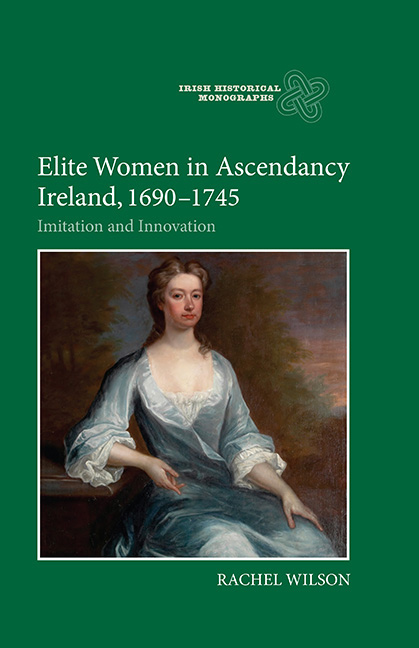Book contents
- Frontmatter
- Dedication
- Contents
- Acknowledgements
- Abbreviations
- A Note on the Presentation of Material in the Text
- Introduction
- 1 The Making and Breaking of a Marriage
- 2 Mothers and Children
- 3 The lady of the house
- 4 Widows, Guardians and Estate Managers
- 5 Society Queens
- 6 Political Players
- 7 Institutional philanthropy
- Conclusion
- Appendices: Family Trees
- Bibliography
- Index
- Frontmatter
- Dedication
- Contents
- Acknowledgements
- Abbreviations
- A Note on the Presentation of Material in the Text
- Introduction
- 1 The Making and Breaking of a Marriage
- 2 Mothers and Children
- 3 The lady of the house
- 4 Widows, Guardians and Estate Managers
- 5 Society Queens
- 6 Political Players
- 7 Institutional philanthropy
- Conclusion
- Appendices: Family Trees
- Bibliography
- Index
Summary
Over the past twenty-five years, a mountain of material has been written (and continues to be written) on the English elite of the late seventeenth and eighteenth centuries and, increasingly, on its female members. Some of this material has taken the form of biographies of the more famous (or infamous) ladies of the age, including queens, royal mistresses, royal favourites like Sarah, duchess of Marlborough, and politicians and socialites like Georgiana, duchess of Devonshire. Other scholars have concentrated on the lives of the female elite as a whole, producing numerous survey-style books which chart their group history at court and around the country. For a more detailed analysis of their education, legal position, domestic, political, social or cultural roles, one need only look to the impressive array of case studies in the form of chapters and articles on particular women, families or topics, which have strengthened the literature as a whole and helped to make it a nuanced and thorough body of work. Looking beyond England, the Welsh experience has attracted less independent attention, but this has been offset somewhat by the fact that England and Wales are often taken as a single unit. The scholarship on early modern Scotland, however, is fast gathering pace as its historians, led by the likes of Katie Barclay, Katharine Glover and Stana Nenadic, begin to ask more and more where its female elite fitted into the country's past and how elite women interacted with their southern neighbours before and after the 1707 Act of Union. Taken together, this body of work has gone far to recapturing knowledge long forgotten or ignored by historians and reintegrating women into an overwhelmingly male historical record. It has also sparked equally important historiographical discussions as to how women's history should be approached from a methodological point of view.
Of particular interest to historians studying early modern women's and gender history has been the question of where the boundaries, or perceived boundaries, of public and private life lay for contemporaries and how these lines affected their choices, options and experiences. The general consensus within the most recent literature is that there were no clear differences between the two.
- Type
- Chapter
- Information
- Elite Women in Ascendancy Ireland, 1690-1745Imitation and Innovation, pp. 1 - 14Publisher: Boydell & BrewerPrint publication year: 2015

